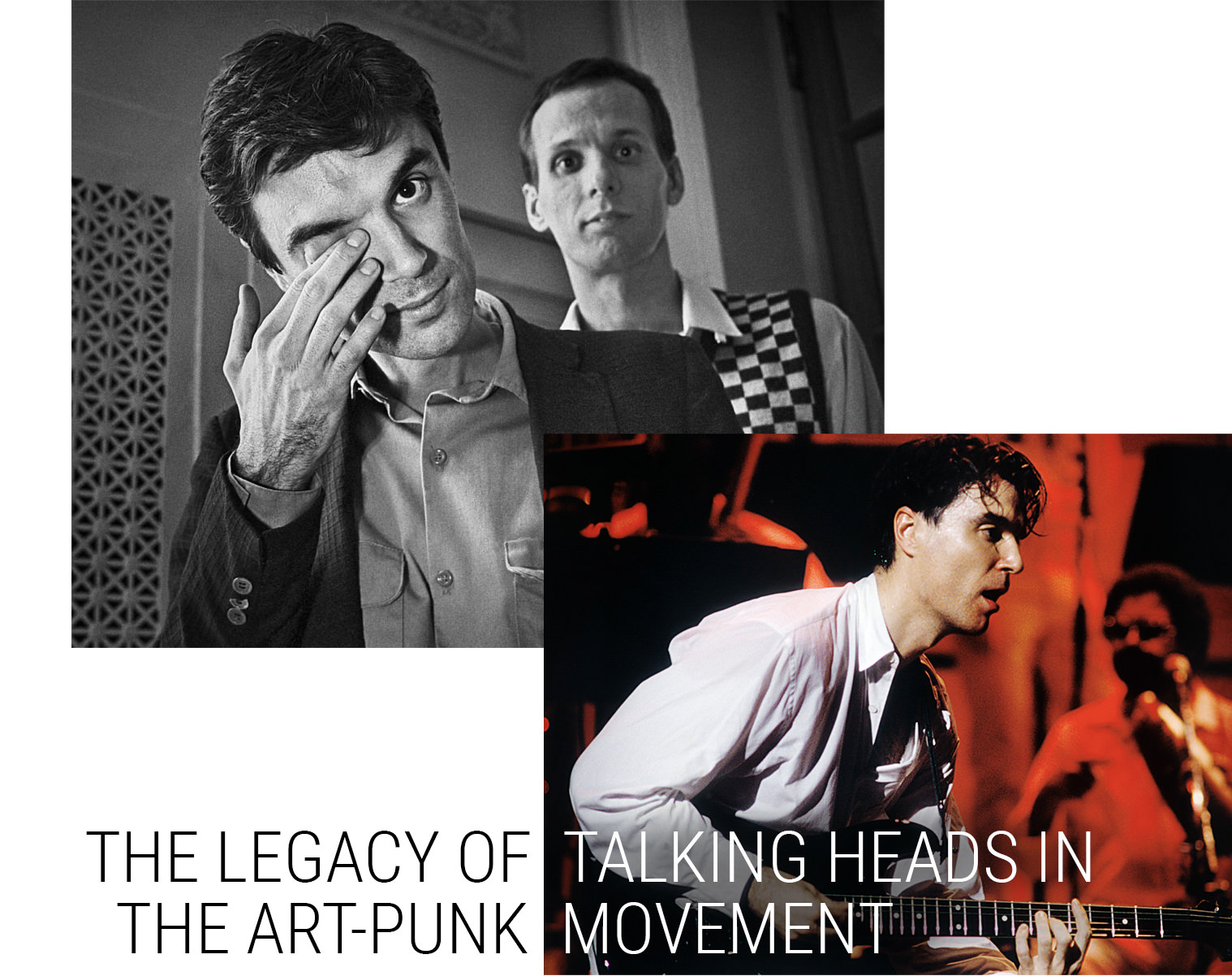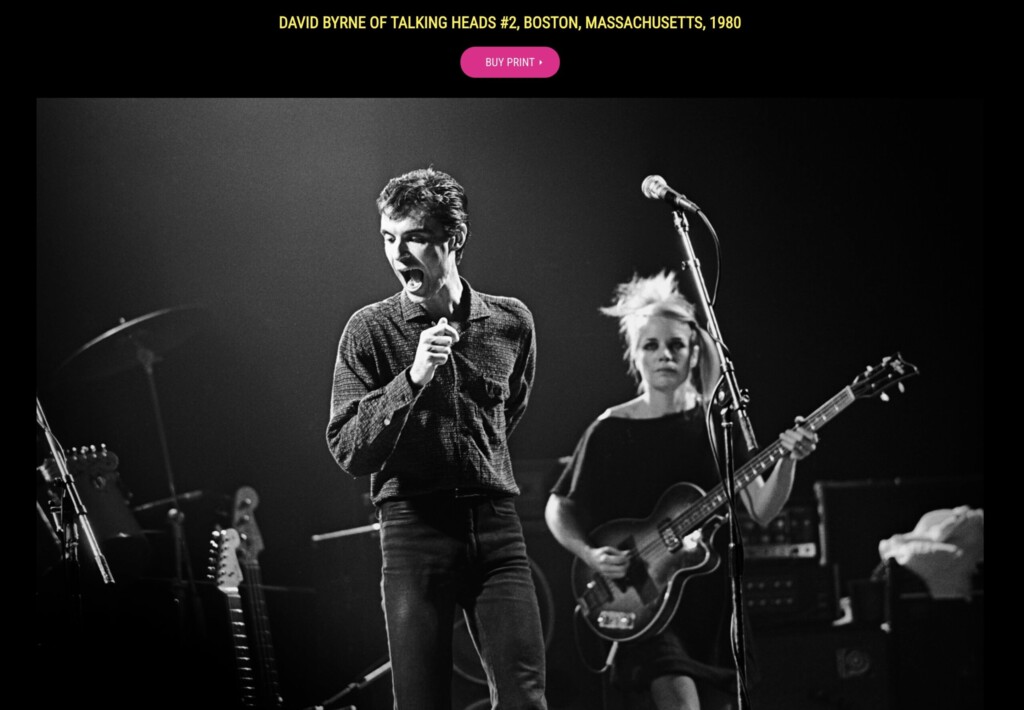Days of Punk
| Fashion
The Legacy of Talking Heads in the Art-Punk Movement
Posted by Michael Grecco

The Legacy of Talking Heads in the Art-Punk Movement
In the late 1970s, as punk exploded in New York’s underground scene and echoed across cities from Boston to Berlin, the art-punk movement began to take shape—more cerebral, more experimental. The legacy of Talking Heads within this wave is undeniable. Their fusion of punk’s raw energy with intellectual lyricism, minimalist rhythms, and art school aesthetics helped redefine what punk could be. While others raged against the machine with snarling guitars and speed, Talking Heads carved a new path that blended rebellion with innovation.
They came from the garages of the suburbs, the decaying urban fringes and the abandoned clubs where the rock of revolt once lived. They were dressed in shredded denim, black leather, new wave hairstyles and colors. It was the hatching of a different kind of revolution.
Enter stage left, Talking Heads—an art-school-informed band that would go on to redefine what punk could be. They weren’t born from the scene; they reshaped the scene. Talking Heads fused the urgency of punk with cerebral wit, polyrhythmic grooves, and avant-garde aesthetics. The legacy of Talking Heads, an art punk movement band, still pulses through the bloodline of modern indie, new wave punk and alternative music.
It was formed in 1975 by David Byrne, Tina Weymouth, Chris Frantz, and later Jerry Harrison. Talking Heads emerged from the same New York CBGB scene where The Ramones and Blondie burst forth to put Punk on center stage.
Talking Heads stood apart from every aspect of the punk genre. Talking Heads was complex as opposed to the minimalist presence of other bands. They mixed funk, world music, and conceptual art into a sound that was like a high wire walker on the fringes of punk. The look of Talking Heads was also transformative in punk. Talking Heads were clean-cut, geeky. Talking Heads were art students creating paintings and sculptures in the air by wielding guitars, translating ideas from the gallery into songs of performance.
Their debut album Talking Heads: 77 (1977) laid the groundwork, but it was Fear of Music (1979) and Remain in Light (1980) that truly cemented their status as pioneers. Collaborating with producer Brian Eno, they pushed boundaries—incorporating African rhythms, stream-of-consciousness lyrics, and tape-loop experimentation. Tracks like “Once in a Lifetime” and “Life During Wartime” became anthems to punk, not because of their sonic innovation but for their thematic complexity. They were songs about identity, anxiety, technology, and modern alienation wrapped in infectious grooves.
How Talking Heads Pioneered a Blend of Punk and Art Culture, Influencing Countless Bands
The Talking Heads were essential to the art-punk movement because they refused to be categorized into any punk box. Talking Heads changed the headspace of punk, merging punk’s DIY ethos with art school intellectualism. Their live performances, especially as seen in the groundbreaking concert film Stop Making Sense (1984), were more than shows; they were performance art. David Byrne’s oversized suit, choreographed movements, and minimalist stage design played with perception and persona, making each show a visual musical experience.
The fusion of sound and concept influenced countless bands and artists. Talking Heads blazed the path for the rhythms of Franz Ferdinand, the cerebral cool of LCD Soundsystem, and the genre-defying sprawl of Radiohead. The impact of Talking Heads spilled into visual culture. It paved the way for musicians to think like multimedia artists, blurring the lines between music, film, fashion, and design.
They proved you didn’t have to conform to punk aggression or pop polish to make something new, and lasting. Talking Heads let it be punk to be weird, thoughtful, rhythmic, and smart yet still shake, rattle and roll the soul. Talking Heads still inspires generations of musicians to explore, experiment, and embrace the oddities of identity.
Talking Heads were the cerebral counterpoint to the rage of punk. They were the thinkers, the shapeshifters, the makers of new. Talking Heads is a legacy of not just music but a wide open door of artistic adventure within a space called punk. Talking Heads is a misnomer because they didn’t just talk, they rewired sound and conception.


